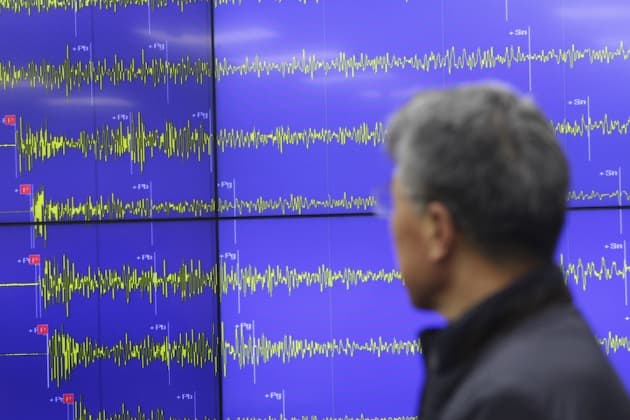New Software Powered By Machine Learning Detects Nuclear Tests Like A Pro
Computer Scientist Erik Sudderth from Brown University has developed a machine learning system that can detect nuclear tests performed under or on the surface of the earth every single minute. Recently, North Korea tested their nuclear power where the output signals were captured by seismic monitoring systems of the Global Seismograph Network. The blast impact was huge and the generated signals were in no way masked by the North Korean Government. However, for clandestine tests of smaller devices performed by terrorists and non-member states of the Comprehensive Test Ban Treaty, there might arise problems. To aid the system, Sudderth invented the Vertically Integrated Seismic Analysis (VISA), a machine learning method to label the “difficult-to-detect†signal.
The International Monitoring System includes 149 certified seismic monitoring stations throughout the Earth. Those stations push data into the CTBTO’s Vienna headquarters, where analysts compile all seismic events into a daily bulletin supplied to nations around the world. Most of the signals including earthquakes and other seismic waves are detected by the system. However, sometimes nuclear test signals are also detected by the monitoring system. Analysts can easily differ between natural seismic waves and artificial nuclear test waves.

The complicacy in the matter raised as the contemporary software was unable to detect tiny artificially generated signals and also compromised with the system’s accuracy. The Vertically Integrated Seismic Analysis (VISA) project was initiated in 2007 as a potential upgrade to the existing software. Automated tools keep a watch on every station and create a log of potential local detections. They also combine data from multiple stations to statistically analyse the time, location and magnitude of plausible seismic events. Analysts then study those data to determine whether indeed each detection was from a seismic event or a random noise. After confirmation of an event, analysts determine whether the wave generated was a natural event or an artificially created one.
Sudderth and his team claimed that VISA can reduce the errors by 60 percent when compared to the original system. It can also provide more accurate location information in most cases. Sudderth hopes that VISA’s ability to generate accurate results might aid in gaining full ratification of the Comprehensive Nuclear-Test-Ban Treaty. The research was reported in the journal Bulletin of the Seismological Society of America.
Watch the hydroacoustic network and how it works in CTBTO:
Source: <a href="https://blog.cs.brown.edu/2016/01/14/erik-sudderths-software-helps-detect-nuclear-tests/" target="_blank" rel="nofollow noopener noreferrer">blog.cs.brown.edu</a>
The International Monitoring System includes 149 certified seismic monitoring stations throughout the Earth. Those stations push data into the CTBTO’s Vienna headquarters, where analysts compile all seismic events into a daily bulletin supplied to nations around the world. Most of the signals including earthquakes and other seismic waves are detected by the system. However, sometimes nuclear test signals are also detected by the monitoring system. Analysts can easily differ between natural seismic waves and artificial nuclear test waves.

Sudderth and his team claimed that VISA can reduce the errors by 60 percent when compared to the original system. It can also provide more accurate location information in most cases. Sudderth hopes that VISA’s ability to generate accurate results might aid in gaining full ratification of the Comprehensive Nuclear-Test-Ban Treaty. The research was reported in the journal Bulletin of the Seismological Society of America.
Watch the hydroacoustic network and how it works in CTBTO:
Source: <a href="https://blog.cs.brown.edu/2016/01/14/erik-sudderths-software-helps-detect-nuclear-tests/" target="_blank" rel="nofollow noopener noreferrer">blog.cs.brown.edu</a>
0

